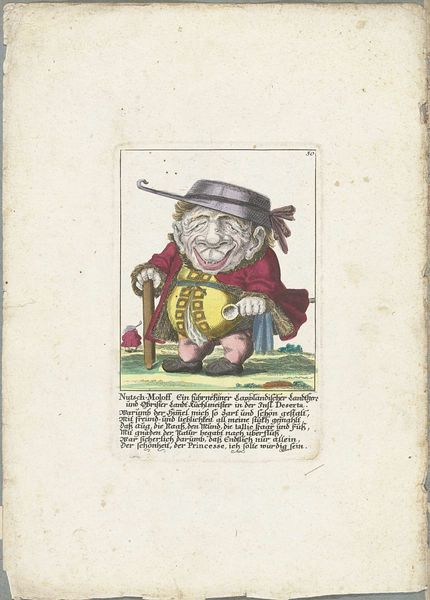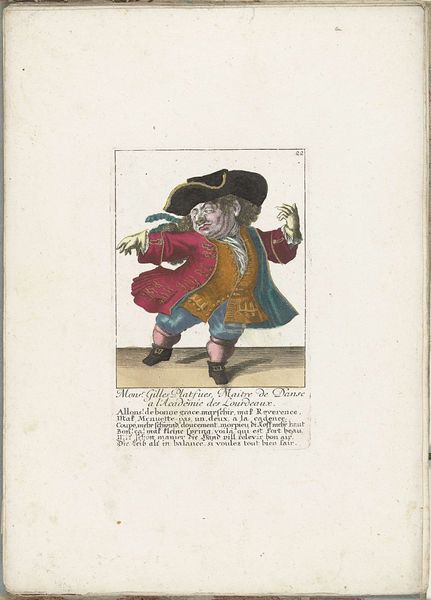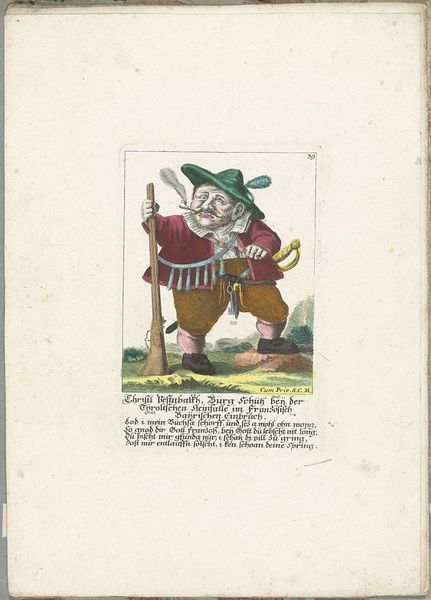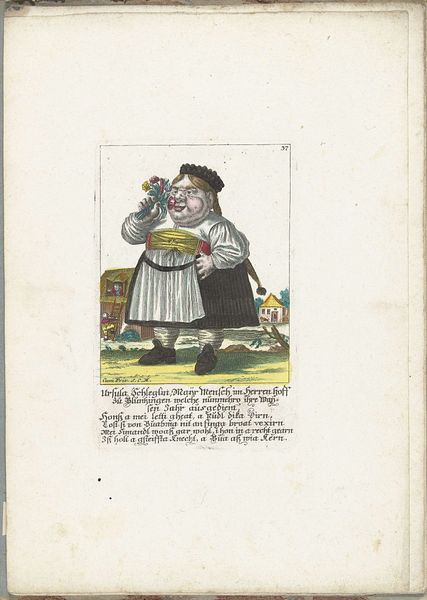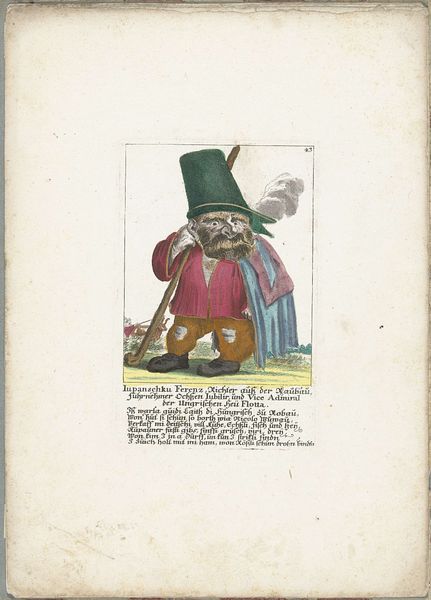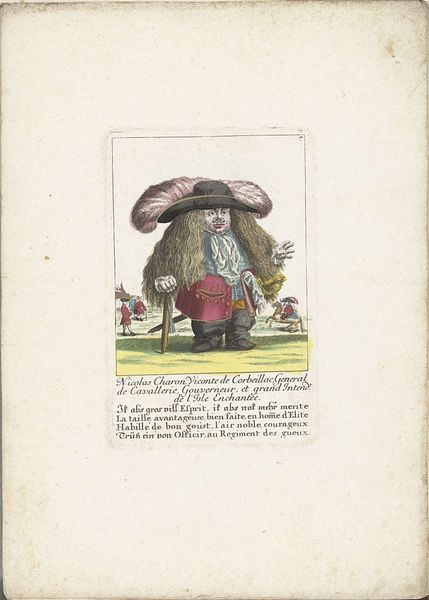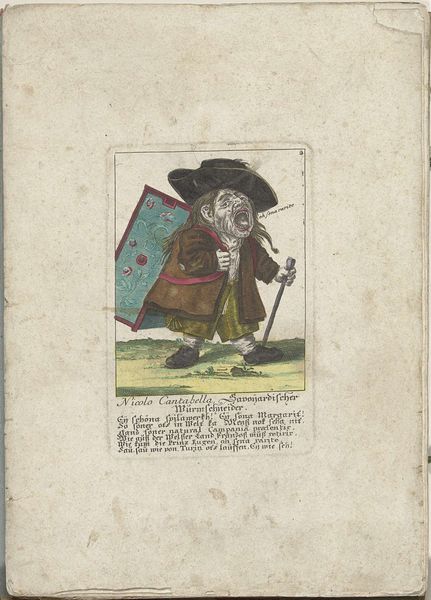
drawing, print, paper, ink
#
drawing
# print
#
caricature
#
paper
#
ink
#
coloured pencil
#
watercolour illustration
#
genre-painting
Dimensions: height 170 mm, width 110 mm, height 320 mm, width 225 mm
Copyright: Rijks Museum: Open Domain
Curator: What a striking figure. This is "The Dwarf Simon Flenschl, ca. 1710" by Martin Engelbrecht. It's a print – an engraving, actually – with later hand-colouring in ink and watercolour, all on paper. Editor: The color palette certainly catches the eye – the vibrant red coat against those…rather bright yellow breeches. There's almost a celebratory feeling, though the man's features are somewhat exaggerated, bordering on caricature. It has a grotesque appeal. Curator: Indeed. Engelbrecht specialized in prints for popular consumption. Looking at the materials, it’s fascinating to consider the role of printmaking in disseminating images and constructing societal perceptions in the 18th century. It raises the question: who was buying and consuming this image, and what was its function as a material object? Editor: I see this caricature reflecting broader cultural anxieties about power, marginality, and the representation of physical difference. Consider the court dwarfs in European history. Here we see Simon as this almost regal yet grotesque figure. Is he being mocked? Celebrated? Is it commentary on social hierarchy? There's a power dynamic at play, and I question what exactly it’s communicating. Curator: Precisely, and to emphasize that power aspect further: the inclusion of the sword, the raising of his drink—both establish him in a leadership role; “Oberknecht des reichen.” It could certainly be argued that it speaks volumes about labour conditions in 18th century Bavaria. And look, even in the background, one notices little figures enjoying a gathering. It makes one ask: was alcohol vital to sustaining labour production? Editor: Good points. Perhaps the dwarf figure here reflects broader attitudes toward the laboring classes, specifically those with marginalized identities. It suggests there's a certain performativity here tied up within social visibility, labor, and the gaze of others. Curator: Absolutely. When one analyses through the social status of its audience, the methods used to produce the artwork and its proliferation through society becomes essential in unlocking how its creator might wish for their artwork to be received, but more crucially, how it actually was received at the time of its production and release. Editor: Well, the piece offers multiple layers of engagement, reflecting both the materiality of art production and the complex social narratives embedded within historical representation. Curator: Yes, its reception now, I feel, asks a different question than its original intent, and that makes it such a joy to look at it today.
Comments
No comments
Be the first to comment and join the conversation on the ultimate creative platform.
